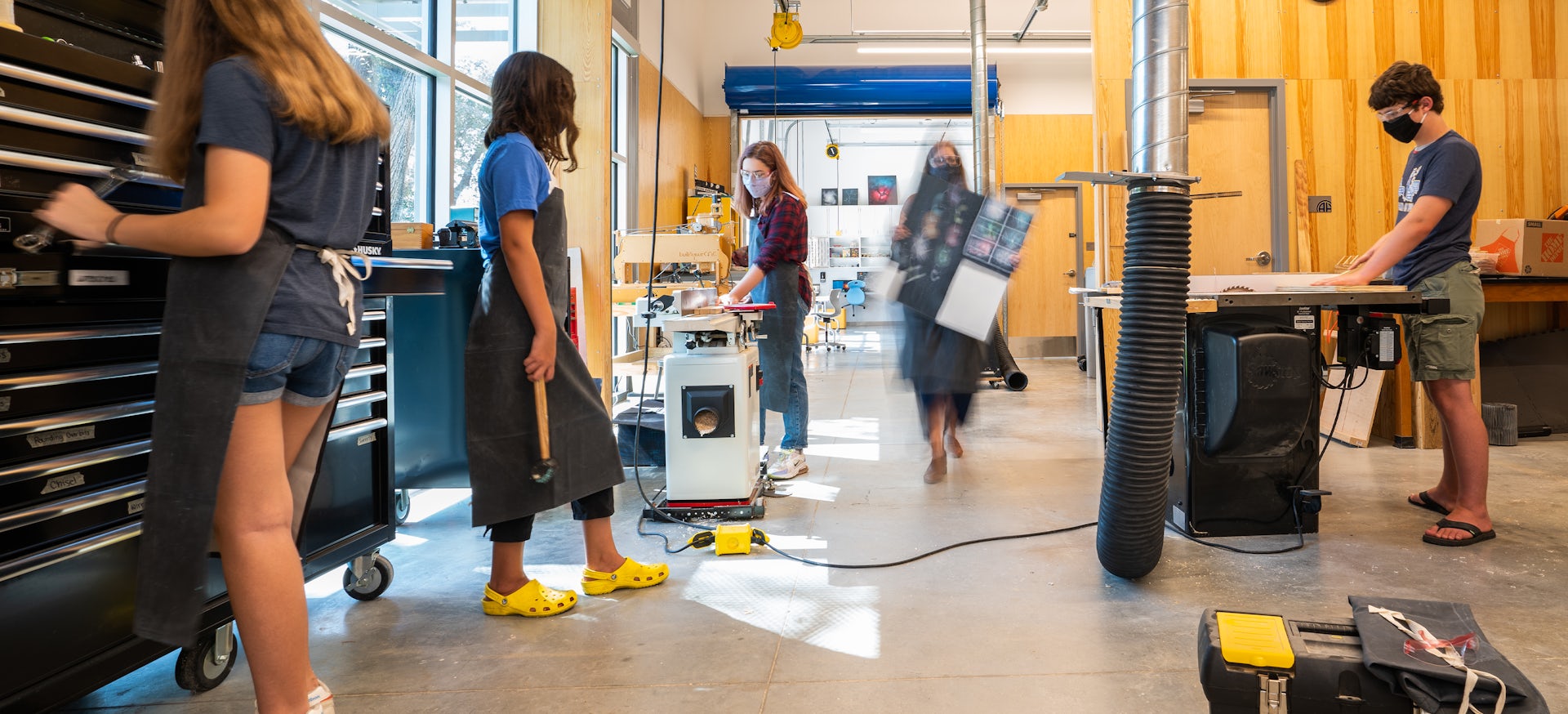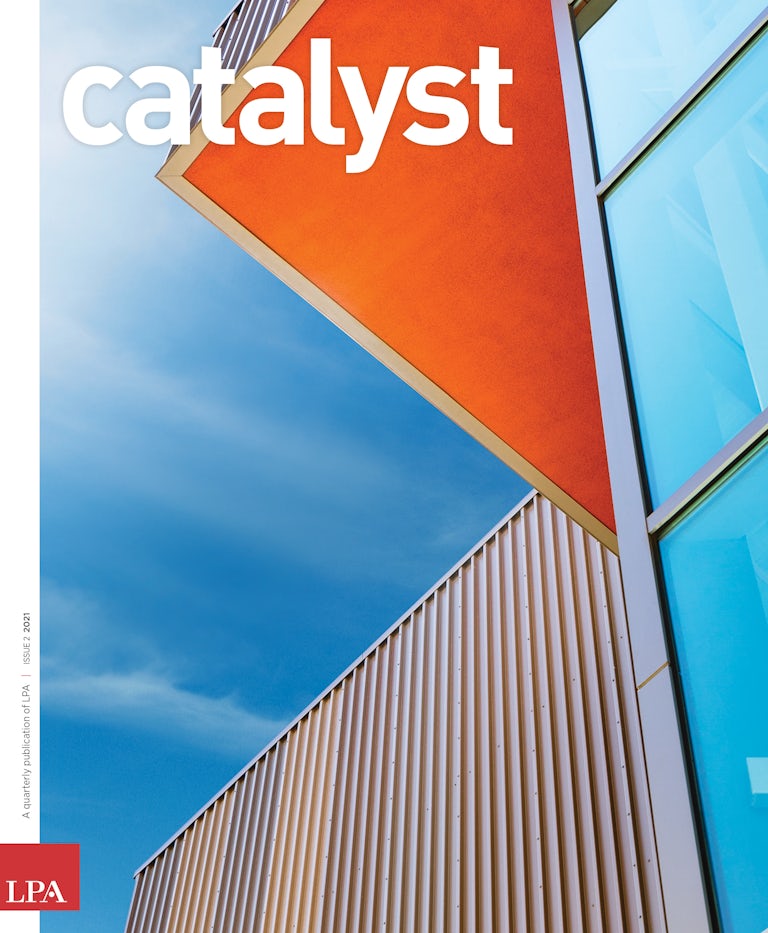The flourishing science program at Alamo Heights Junior School had long since outgrown its existing space when the school district moved in 2017 to create a new 24,700-square-foot STEM building.
Teachers had a long wish list for their eight new classrooms and two new labs. They wanted students to be able to spill into an outdoor courtyard to conduct experiments. They asked for operable partitions so that they could team up on lessons for multiple grade levels. They envisioned larger, flexible spaces that could handle growing numbers of students intrigued by the hands-on possibilities of science, technology, engineering and math.
New Building Revs Up a STEM Program
Educators played a key role in developing the design for a Texas school’s new STEM building.
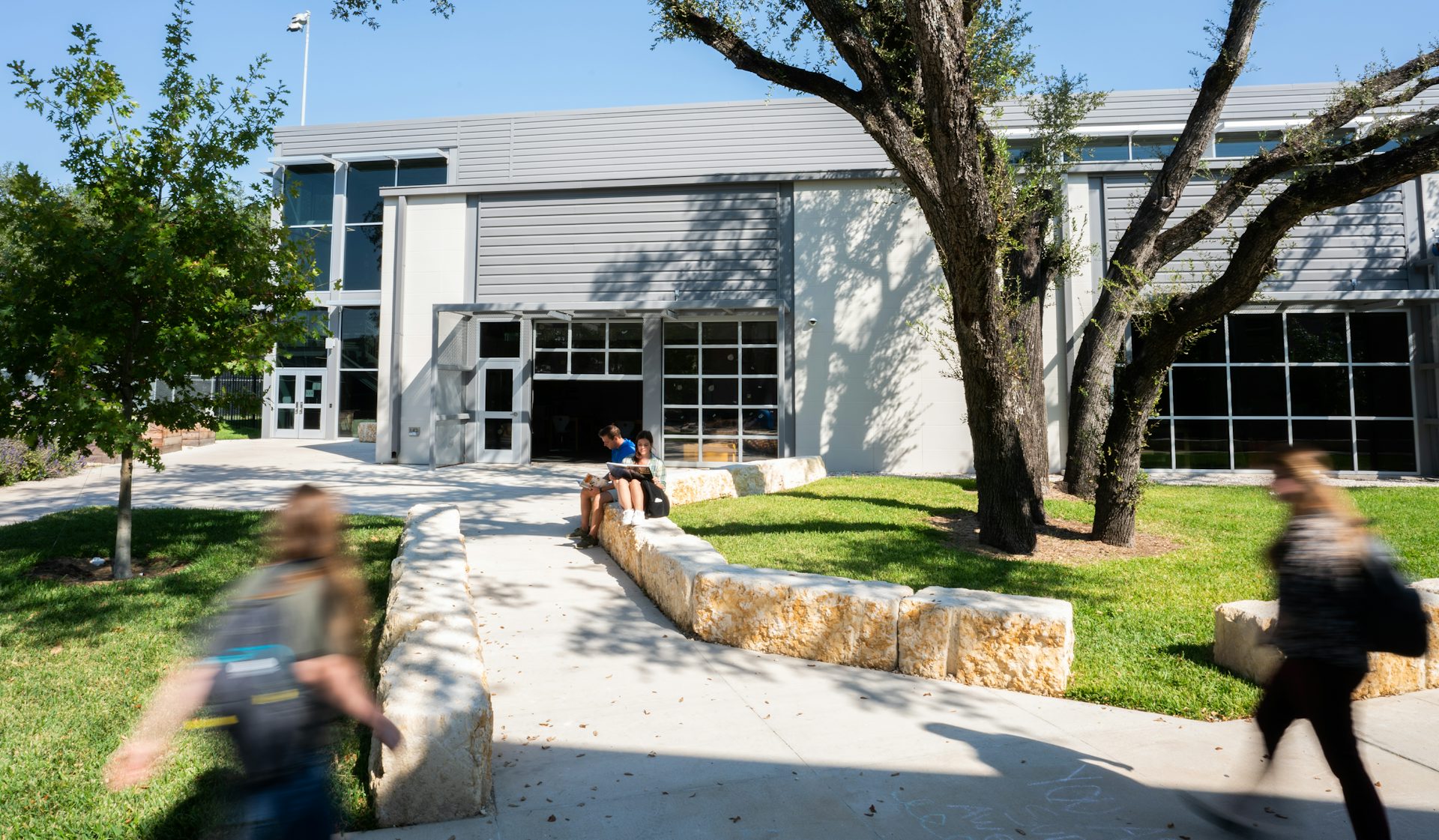
The Alamo Heights Independent School District, which sends 93 percent of its students to college, wanted the building to achieve many goals beyond textbook teaching.
“They wanted the building itself to be a teaching tool,” says Michelyn Smith, LPA Architect and Design Coordinator.
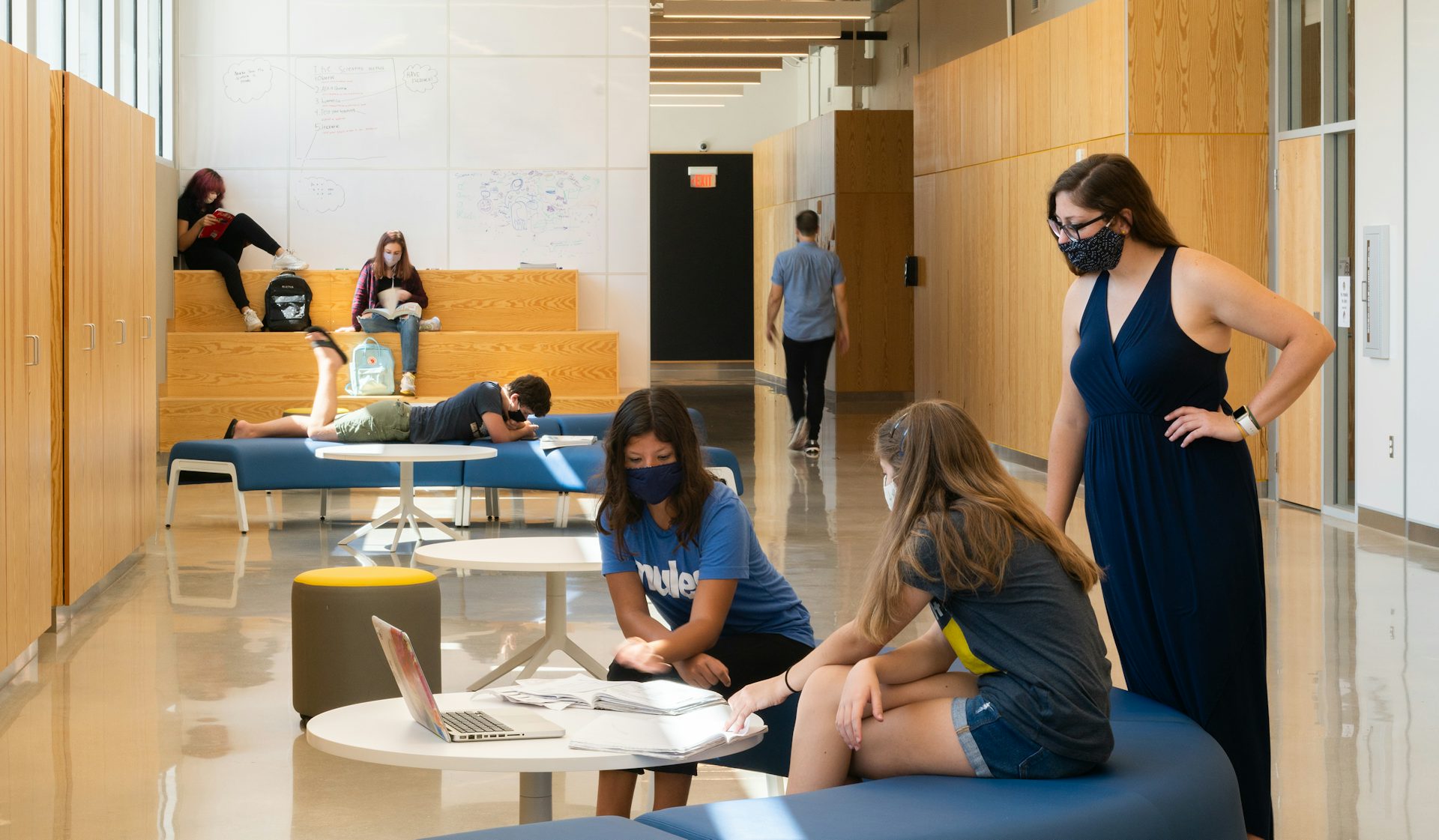
The new building addresses the teachers’ wish list in many ways. The design includes double-decker spaces for drop experiments that demonstrate the laws of motion and wall panels that measure distances along the hallway. Inside each science lab are floor markings in three-foot increments. Almost every space has a writable, collaborative surface, and magnetic tackboards line the hallways.

The building’s concrete floors and steel structure were left exposed to help students grasp the steps involved in putting a building together. Brick was used for the foundational science learning spaces for sixth- and seventh-graders, tying in to the masonry architecture elsewhere on campus. Metal and fiber cement panels are used on the exterior of the two STEM labs’ innovative spaces, providing an updated look.
Inside each science lab are three-foot, six-foot and nine-foot floor markings. Almost every space has a writable, collaborative surface, and magnetic tackboards line the hallways.
Students and staff had just one semester in the new building, from August 2019 to spring break in 2020, before COVID-19 restrictions sent everyone home for remote learning. During their initial brief time on campus, students quickly became accustomed to using their laptops while perched on limestone block walls around the new courtyard. Based on teacher observations, students also enjoyed the new building’s upstairs lounge, the great natural light and the fun, almost collegiate vibe.

“It was a pretty impactful first semester,” says LPA Studio Director Sara Flowers. “Sawdust was all over the woodshop in the STEM classroom. The students were embracing all of the different amenities.”
The design preserves mature oak trees, which provide shaded areas for the new building. The building’s east-west orientation and horizontal louvers shade south-facing windows, helping to cut energy costs in the Texas heat.
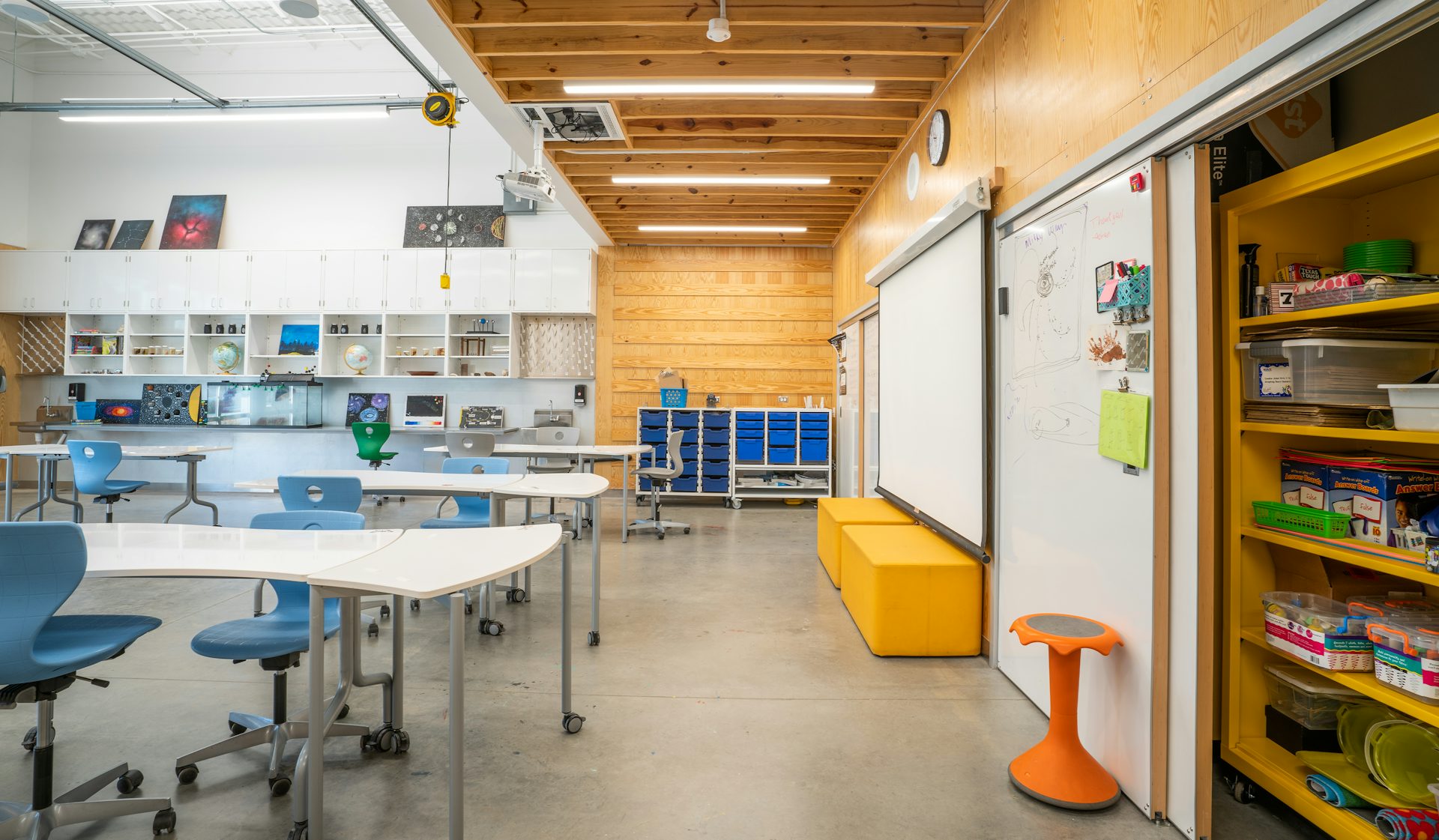
The design process included extensive engagement with the high school and junior school science teams, as well as sensitivity to the surrounding neighborhood.
“We went through several studies to see how close to the property line we could go,” Flowers says. “This is a two-story building, and we wanted to be respectful of the neighbors.”
To satisfy privacy concerns, designers installed clerestory windows high on the walls. The windows provide ample natural light and soothing views. “When you’re in the space, you get a pretty view of sky, clouds, treetops and natural light,” says Brita Pearson, LPA Architect and Project Manager. “Privacy will never be an issue in either direction.”
Identifying key stakeholders was an important step in the process. “We got the right people to the table at the beginning and got into the weeds with them to understand solutions and constraints,” Flowers says. As a result, “we were able to blend the poetic and the pragmatic.”
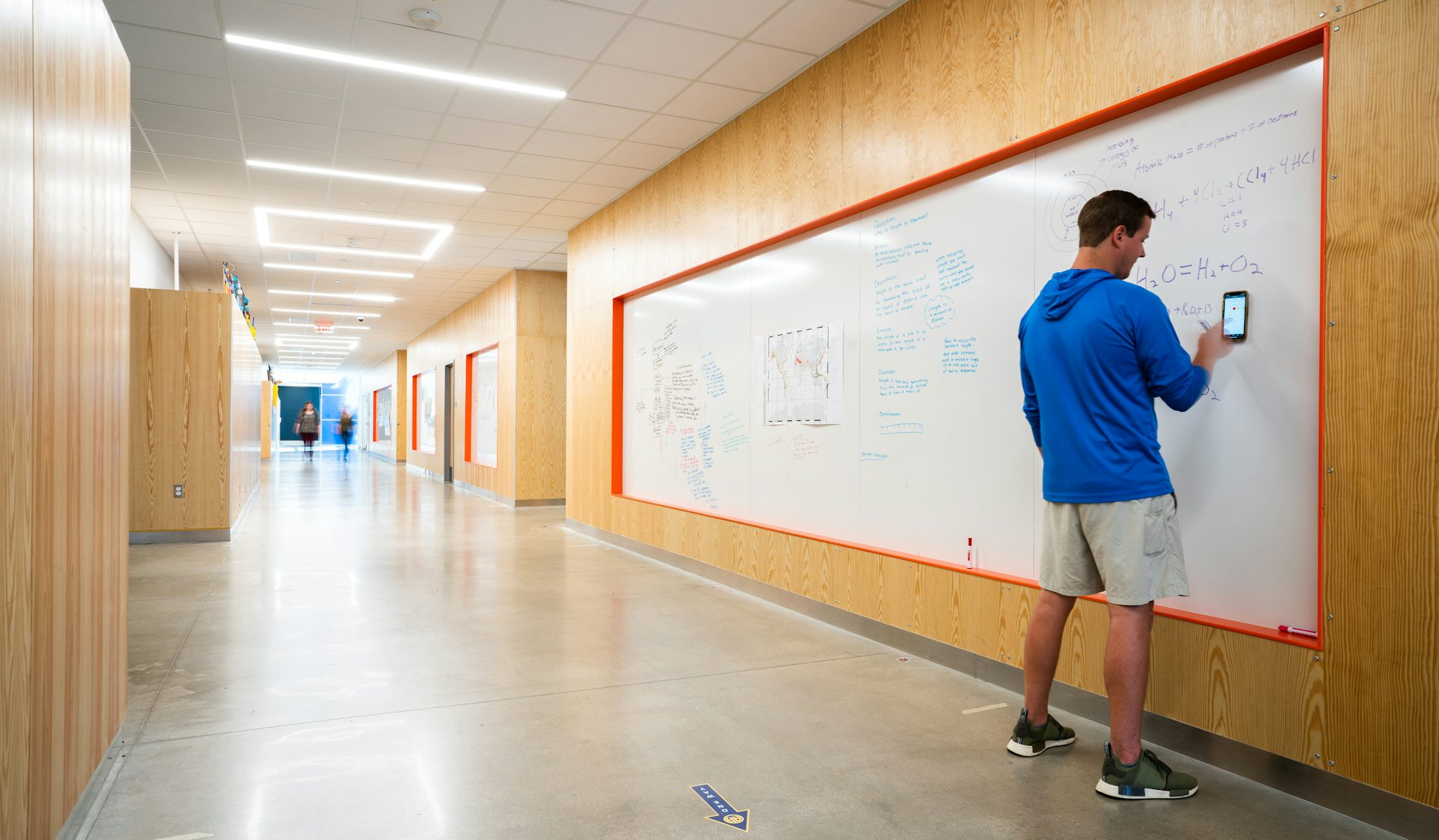
Jeff Wheatcraft, an eighth-grade teacher who is also the school’s unofficial STEM coordinator, praised LPA for its extensive outreach to teachers and staff to assess their needs.
The design process “was very thoughtful,” says Wheatcraft, the 2018 Texas teacher of the year. He says he met with LPA designers “upwards of 50 times.” He even asked for, and received, a set of blueprints.
Before the new building came to pass, Wheatcraft had been landlocked within the four walls of a second-floor classroom in one of the older buildings on campus, while yearning to give his students more opportunities for hands-on experimentation.
“I requested ways to egress the building with even something like a car,” Wheatcraft says. Now he has a ground-floor lab with two garage doors. “We can literally open a garage door and pull in my 2010 Toyota Corolla so that the kids can work on it right there,” he says. That would be the car he drives to go storm-chasing, to learn more about the science of severe weather. The students create modifications that help with his research.
The students returned to campus in September 2020. One recent 68-degree day, students spent much of the day outside welding.
“We’re able to have more students because the space is bigger,” Wheatcraft says. “With the space we’ve been given, now there’s nothing my students can’t tackle.”
We got the right people to the table at the beginning and got into the weeds with them to understand solutions and constraints... We were able to blend the poetic and the pragmatic.


